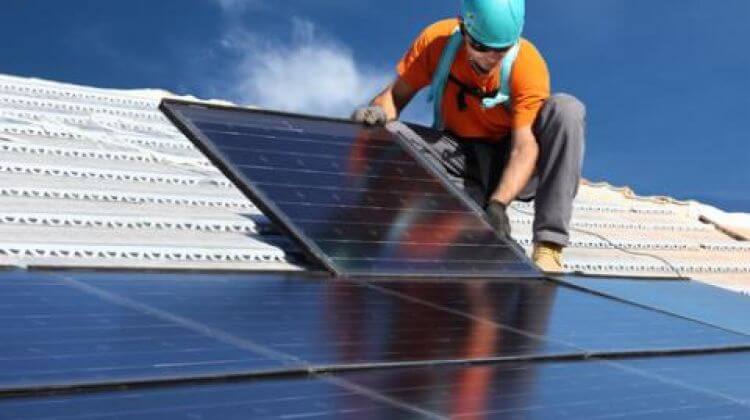9 Significant Ways to Reduce Your Household Carbon Emissions

It takes all of us to make any significant progress in reducing the effects of Climate Change. When looking at an individual, there are many things one person can do to decrease their household carbon emissions. Some of these efforts require minimal effort and money, while others take some planning but can provide massive reductions.
Here are nine impactful ways to reduce your household carbon emissions:
- Replace Lightbulbs With LEDs
LEDs (light emitting diode) use significantly less electricity than incandescent and CFL (compact fluorescent lightbulb). Compared to an incandescent light bulb, LEDs use 75% less energy! While they do cost slightly more than a regular light bulb, over time they can save you a decent amount of money. Plus, LEDs last a lot longer than incandescents and CFLs. Less energy and fewer products means lower emissions.
- Shop Local
Shopping locally not only benefits the planet but also your neighborly local businesses! By buying local goods you are reducing the amount of product transportation. Items shipped and flown long distances contribute a lot of carbon emissions in order to cover such great distances.
Instead, buying from your local business owners should reduce that carbon footprint. Your local businesses will also thank you!

- Switch To An Electric Range
Replacing gas-fired appliances with induction electric ones can reduce your household carbon emissions. This is also known as fuel switching.
Traditional electric resistant ranges use a considerable amount of energy and take a while to heat up. Instead, look for induction ranges. Induction heating uses electromagnetic waves to heat the pan directly.
This technology uses a lot less energy than either gas or electric resistant heating. Induction ranges also cook food faster. Lastly, induction ranges (as well as electric resistant) produce zero emissions and indoor air pollution.
- Switch To An Electric Water Heater
Another fuel switching option is to replace the gas water heater with a heat pump electric one. A Heat pump is technically significantly more efficient than regular resistant electric or gas-fired appliances. Plus, the grid is constantly getting greener through the deployment of more and more renewables such as solar photovoltaic (PV) and wind energy!
- Switch To An Electric Dryer
Another fuel switching option is to replace the gas dryer with an electric one. Like the water heater, there are extremely efficient heat pump dryers. These type of electric dryers are much more efficient than the traditional electric and especially any gas dryer.
Less energy use equates to fewer emissions!
- Install Solar PV System
Solar PV cost has dropped immensely over the years. Plus homeowners can take advantage of the solar PV federal tax credit.
If you are already thinking about going solar, now is the time to do so to claim the tax credits before they are gone. As with the theme of this article, switching to electric/renewable/more efficient devices generates less carbon emissions for your household.

- Compost and Garden
Got any scrap food waste after cooking? Toss it in an outdoor space for composting and start a homegrown garden! It is not only fun, but it’s healthy for you and the environment!
By using food “waste” and growing your own fruits and vegetables, you reduce the amount of food miles in your weekly grocery shopping. Food miles are the miles the food has traveled from farm to table.
The fewer food miles, the fewer carbon emissions from transportation. Lastly, growing your own food is healthy for you and your family!
- Reduce Meat and Dairy Consumption
And speaking of healthy diets, reducing the amount of meat and dairy can significantly reduce your household carbon emissions. While some consider meat and dairy delectable, they do use an extreme amount of resources to produce the final product.
All of these resources take an abundant amount of energy which lead to carbon emissions. Plus, the very nature of cattle produce a lot of nitrogen gas, an even more powerful greenhouse gas than carbon dioxide. Cows also generate the greenhouse gas methane through their digestion and their waste. Instead, switch the protein to fish, beans, tofu, or protein-rich vegetables.
According to Our World in Data, for example, the beef produces 66x more emissions than peas! Like gardening, it is not only good for the planet, but for you too!

- Switch To An Electric Car
Lastly, switching to an electric car is a fantastic way to reduce the household’s carbon emissions. Going from an Internal Combustion Engine vehicle (ICEV or gas car) to an electric vehicle (EV) can greatly reduce your contribution to Climate Change.
EVs produce fewer emissions through both operation of the vehicle and throughout the vehicle’s entire lifecycle.
Plus, electric cars are so efficient, they can also save you money. In fact, a typical EV is rated around 120 MPGe while a regular gas car is rated around 30 MPG.




